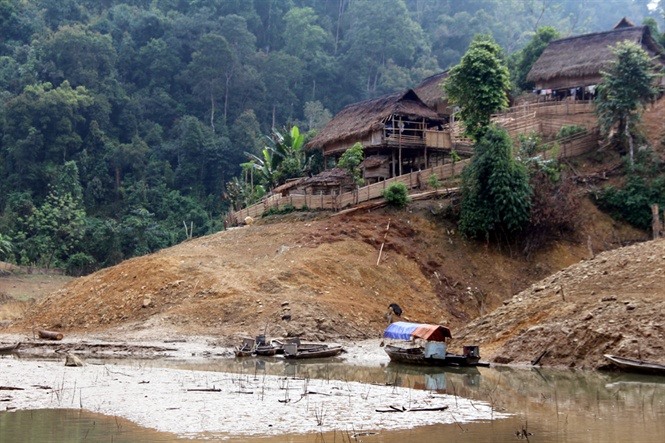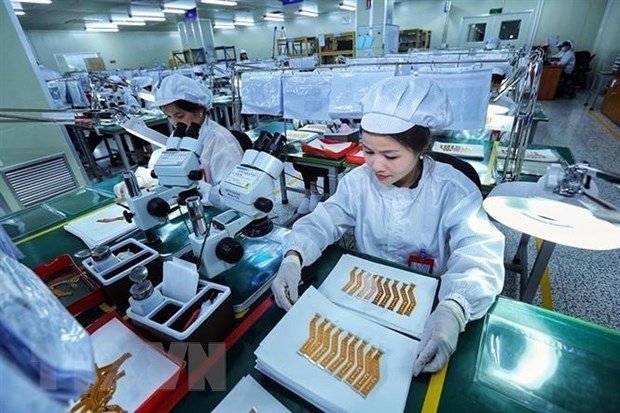 Society
Society

Before Bản Vẽ Hydropower Project was built in 2004, the Government established a resettlement area for all who lived in the zone that would be affected—and in some cases totally submerged—by the project. Now, people are leaving the the resettlement area for land near their old village in Hữu Khuông Commune, Tương Dương District, aiming to find better livelihoods and educational opportunities for their children.
 |
| Many returnees choose to live by springs. - Photo nongnghiep.vn |
NGHỆ AN – Before Bản Vẽ Hydropower Project was built in 2004, the Government established a resettlement area for all who lived in the zone that would be affected—and in some cases totally submerged—by the project. Now, people are leaving the resettlement area for land near their old village in Hữu Khuông Commune, Tương Dương District, aiming to find better livelihoods and educational opportunities for their children.
Lương Văn Quế, one of the returnees, said that the resettlement area in Thanh Chương District was too isolated. Moreover, the lack of clean water and land left them feeling they had no future. Selling the house for VNĐ40 million (US$1,760), he took his wife and three children back to the old commune.
Quế’s family is among 114 households of Hữu Khuông Commune trapped in the situation. Most of them sold their houses, farms and land in the resettlement area. They gather into groups or establish their own villages and vote for leaders to handle community issues.
Despite efforts of local authorities, only 10 families have been persuaded to remain in the resettlement area some 300 km away. The resettlement area, meanwhile, is secluded with poor infrastructure.
Therefore, most people prefer a precarious life near their old commune to that their kids have better opportunities to attend school.
According to Hữu Khuông Commune People’s Committee, there are about 50 students following their parents back to the old village. As the children had moved and completed household registration in the resettlement area, they are not prioritised to study at boarding schools in the commune.
Their parents, therefore, have to set up tents near the commune centre for them to live. Every week, they pay a visit to check if the children are doing well and supply them with food.
Post-hydropower project dilemma
The people of Hữu Khuông Commune are not the only ones who prefer to return. According to Tương Dương District People’s Committee, nearly 3,000 families with more than 13,500 people in eight communes were relocated due to the Bản Vẽ Hydropower project. Eight families in Hữu Dương Commune refused to move to the resettlement area as they wanted to bring all their wood along with them but the Nghệ An Province People’s Committee only allowed 3cu.m of wood to be brought out of the reservoir area.
According to Nông nghiệp Việt
“Once a group is persuaded to move to the resettlement area, another one comes back. They gather into groups, living along the springs, imposing difficulties for security personnel,” said the representative of Hữu Khuông Commune.
Vi Văn Dung, a returnee, said that it was difficult to make ends meet at Thanh Chương resettlement area so he decided to take the whole family back to Hữu Khuông Commune.
Nguyễn Phùng Hùng, head of Tương Dương District Department of Natural Resources and Environment, said that there are 4,500ha of land in the Kỳ Sơn and Tương Dương communes affected by the hydropower project. Land and infrastructure with the total area of 2.1ha was completely submerged under the reservoir.
According to Hùng, the area on the floodplain of the Bản Vẽ Hydropower project is nearly 4,300ha. The project regulation says that it did not implement any compensation plan and clearance on this area. However, all residents in this area were asked to move to the resettlement area.
“Meanwhile, the project investor has not reconstructed and upgraded ruined constructions in the resettlement area. Many roads and clear water systems have not been completed while people have not received the financial assistance they are owed,” Hùng said.
Nguyễn Văn Hải, head of Tương Dương District People’s Committee, told Việt Nam News that since those people are now technically residents of a different district, it was impossible for Tương Dương District’s authorities to offer them social welfare. However, regularly health examinations for them are regularly conducted.
“I think they choose to come back as they are familiar with the living condition here. Therefore, besides persuading them to move to the resettlement area, we have to protect them by prohibiting all fishing activities in the flood season,” said Hải.
By the end of June 2017, Nghệ An Province had 32 hydropower projects at various stages of complete, three of which have come into operation since July 2017. Bản Vẽ is one of three hydropower projects witnessing the largest population moving to the resettlement areas. – VNS









